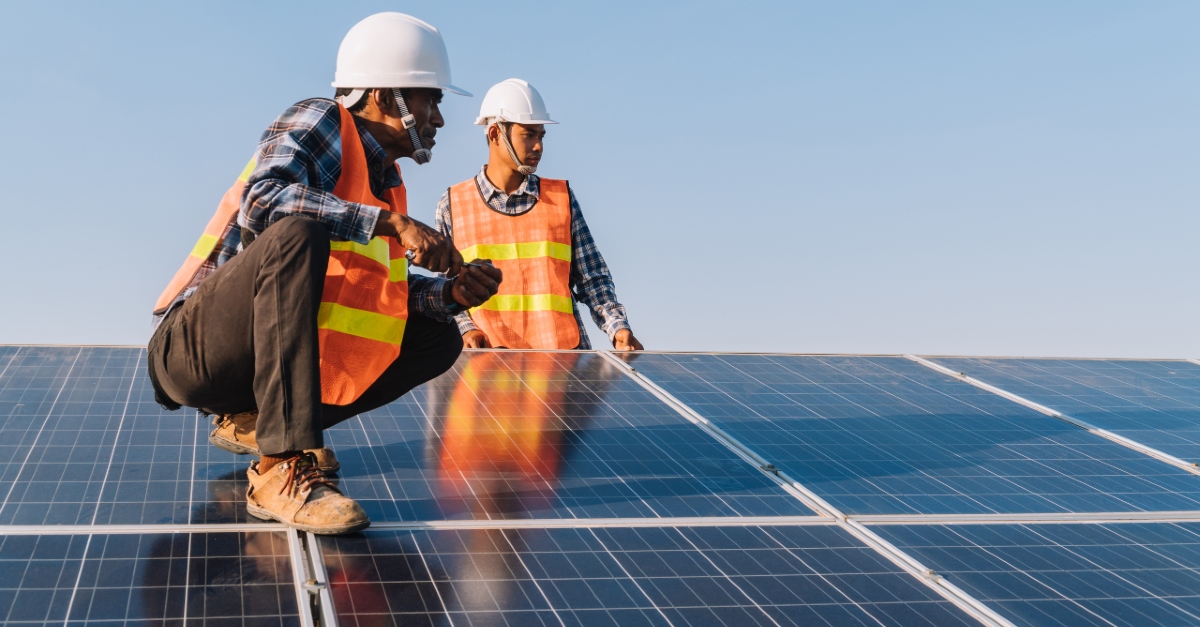

ASEAN Can Cover Two-Thirds of Energy Demand with Renewables
Newsletter

Southeast Asia can save energy costs of up to USD 160 billion; addressing energy security and climate risks through energy transition, says IRENA.
Jakarta, Indonesia / Abu Dhabi, Unites Arab Emirates, 15 September 2022 – Southeast Asian countries can meet their growing energy demand with renewables and cut 75% of their energy-related CO2 emissions by 2050, half of the emissions compared to today.
Released by the International Renewable Energy Agency (IRENA) during the ASEAN Energy Ministerial, the 2nd edition of the Renewable Energy Outlook for ASEAN: Towards a regional energy transition shows that almost doubling renewable power by 2030 creates significant regional business and investment opportunities.
ASEAN is home to one of the youngest coal power plant fleets in the world. Yet, an increasing number of ASEAN Members have set net-zero emissions targets by around mid-century. Planning the transition must begin now if climate goals are to be met, with coal power substitution as a top priority not least to avoid stranded assets. IRENA’s Outlook identifies transition pathways focusing on renewables, electrification, and emerging technologies such as hydrogen and batteries. It builds on the political momentum for change in the region.
IRENA’s Director-General Francesco La Camera said: “With its massive renewable potential, Southeast Asia stands at a historic crossroad between moving away from fossil fuels and towards a renewable energy transition that meets the region’s economic growth and rising energy demand. Coal retirement, coupled with renewables and regional grid interconnection, is an indispensable step to aligning with net-zero targets. Half of ASEAN members have signed up to international efforts to end coal in the power sector. Climate commitments require concerted and accelerated action, that must begin now to have a hope of success.”
Dr. Nuki Agya Utama, Executive Director of the ASEAN Centre for Energy (ACE) said: “Accelerating energy transition is crucial in order to meet climate goals and support the region’s economic growth. Guided by the ASEAN Plan of Action for Energy Cooperation (APAEC) Phase II, ASEAN is committed to achieve 23% renewables share in total primary energy supply (TPES) by 2025. Moreover, the regional blueprint includes the optimisation of clean coal technology as one of its programme areas. I believe IRENA’s Renewables Outlook for ASEAN will help chart pathways to a more sustainable, net-zero future for the region.”
As renewables have become the cheapest power option in much of Southeast Asia, renewable capacity additions can cost-effectively increase up to 40% of total power capacity by 2030 compared to one-quarter today. This means around 300 gigawatts (GW) of new renewable capacity installations, most of it solar and wind.
Significant investment is needed to boost renewables in the national energy mixes, but overall costs are balanced by substantial savings on supply and fuel costs. ASEAN’s investment in renewables must almost triple the current levels. Investment opportunities include renewable power, transmission, biofuels, energy efficiency, hydrogen and electromobility and can amount to over USD 6 trillion cumulatively to 2050.
Countries can reduce their energy costs by as much as USD 160 billion to 2050. Overall, the avoidance of costs related to health and environmental damage caused by fossil fuels can bring savings of up to USD 1.5 trillion cumulatively to 2050.
Electrification of end-uses is important, ranging from electrifying transport, buildings and industries to electric vehicles, and from electric cooking to clean hydrogen production. The electricity share in final energy will need to rise from 22% today to more than half by 2050. Clean hydrogen can provide a complementary solution for the region’s ambitious climate objectives.
Clean hydrogen and its derivatives also provide an alternative for decarbonising transport modes like shipping, and some heavy manufacturing industrial processes. It will also bring significant supply chain opportunities for example in battery, green commodities, and green materials manufacturing.
Read the Renewable Energy Outlook for ASEAN: Towards a regional energy transition.




